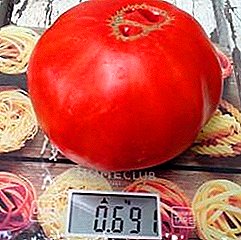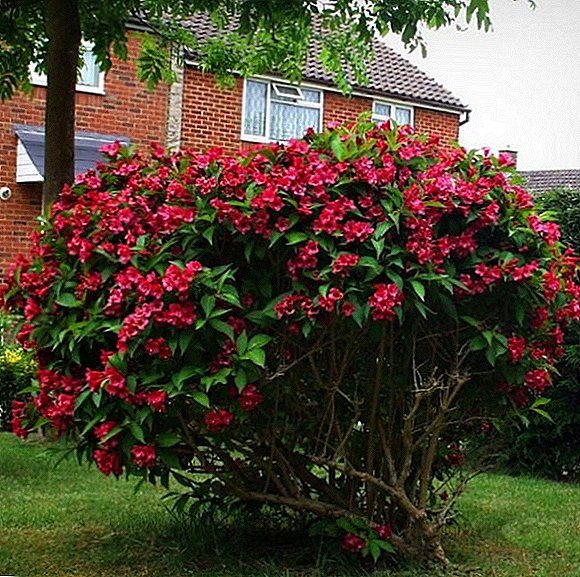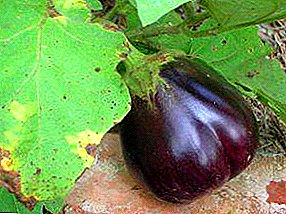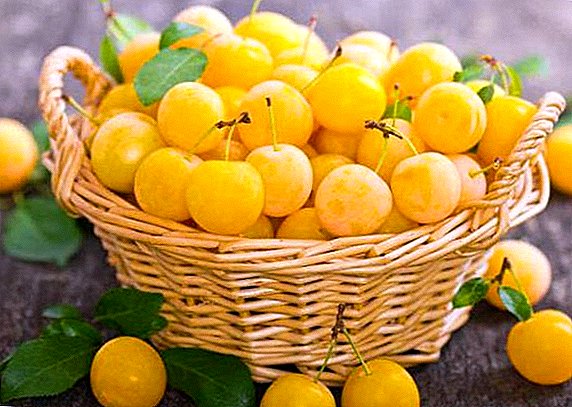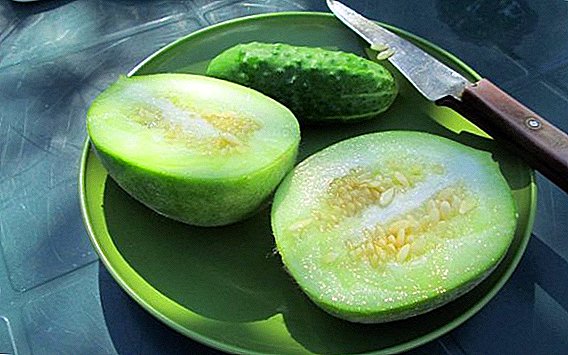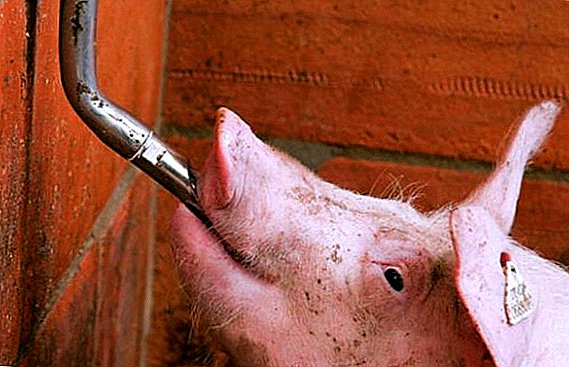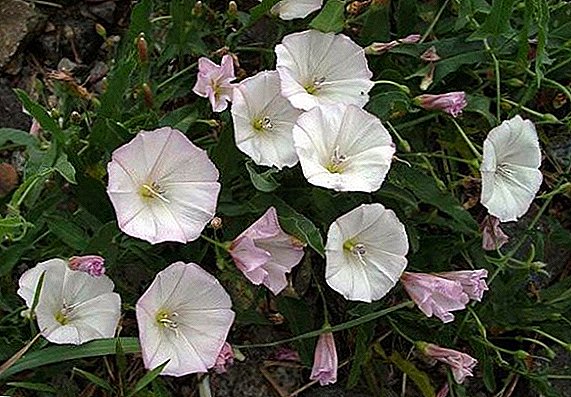 All gardeners and gardeners without exception are concerned with weed control. There are weeds that are removed from the garden simply and quickly. However, there are a number of harmful plants, which are very difficult to withdraw. One of the representatives of such weeds is the bindweed, and in this article you will learn how to deal with them.
All gardeners and gardeners without exception are concerned with weed control. There are weeds that are removed from the garden simply and quickly. However, there are a number of harmful plants, which are very difficult to withdraw. One of the representatives of such weeds is the bindweed, and in this article you will learn how to deal with them.
How does convolvulus look like
Field bindweed (it is also called birch, loach or dodder) is a species of a perennial herbaceous plant of the creeper family. It has an extensive root system, and its long taproot can penetrate the soil to a depth of about three meters.
Bindweed field has beautiful funnel-shaped flowers of soft pink, purple or white, which bloom from May to August. On each peduncle is from one to three flowers. Bindweed field can be found in many European and Asian countries.
Familiarize yourself with the methods of struggle against sleepiness, cow parsnip, quinoa, dodder, field sow thistle, milkweed, dandelions.

What harm in the garden
Admiring the delicate flowers that thickly encircle a fence or a gazebo, one should not forget that beauty can be deceptive. And in this case it is. Due to the strong root system of the loach pulls moisture from the soil, which leads to its drying. It also allows him to survive during a drought.
Important! Convolvulus stems with rare leaves can reach two meters in length and can ruin almost any cultivated plant in the garden in a short time, twisting and depriving it of nutrients and light.The bindweed is also quite prolific. It propagates with the help of seeds and root system. Seeds retain the ability to germinate for three years, and a small piece of the root remaining in the ground can easily take root and give life to a new batch of weeds.
But that's not all. In addition to the harmful properties of the plant itself, the loach is a haven for many garden pestswhich, of course, only aggravate the situation. If you have wondered how to remove a bindweed from the garden, the advice of experienced agronomists will help you.

Did you know? Record for the length of the roots is a fig, which grows in the east of South Africa near the Echo caves. Its roots go back as far as 120 meters!
How to deal with field convolvulus
Field bindweed is a very cunning plant, but it exists. enough methods of dealing with it:
- agrotechnical techniques;
- biological control methods;
- folk methods;
- using "chemistry".
Agrotechnical receptions
Timely weeding can save your garden.
It is necessary to carefully select all remnants of the root system of the plant, since they can take root and give shoots. It is most convenient to use forks in order not to cut down strong and long roots.
To remove weeds, you can use different devices, such as Fokin's ploskorez.

Can help and pieces of dark covering material. They should be spread out in those places where the bindweed grows. From a lack of sunlight, the shoots will quickly die, and all that remains is to remove the roots from the soil. Another method is the use of ash, which lowers the acidity of the soil. And since the loach prefers acid soils, it will soon die.
Biological methods of struggle
Let's figure out how to deal with birch trees without using harmful substances in your garden. In that can help sowing sideratov. These are herbaceous plants that quickly sprout and have a thick growth. These include mustard, clover, canola. They will function as a protective barrier and prevent the weed from germinating.
An effective method is mulching with organic materials, such as sawdust, wood chips or straw. It is necessary to cover the soil with a thick layer and leave the mulch for about a year. After that, deep dig and try to choose the remnants of the roots.
Read also about whether lawn grass can kill weeds.
Folk recipes
If there is no time or opportunity to spend the whole day in the garden, then you can use the folk remedies. Salt is an affordable and effective way. It is necessary to dissolve 1.2 kg of table salt in 10 liters of water and spray it with the solution of the place that is most overgrown with weed.

You can also try using a high concentration soda solution or acetic acid. It is necessary to spray them only directly on the weed itself and at a distance of about 20-30 cm from cultivated plants.
Important! You can not give the vinyu grow, it must be removed from the garden immediately after the appearance.Destructive for the loach will also be digging the ground.
With the help of "chemistry"
If the above methods did not help or you need to quickly achieve the disappearance of the weed from the garden, then herbicides will bring the desired result in the fight against field convolvulus.
One of the most effective chemicals is Roundup. From 10 to 120 ml of product are usually added to 10 liters of water. The dose depends on the plant that needs to be treated from the weed. This solution is sprayed all the shoots of the plant. If there is a ripening crop on the bed, then you need to protect the fruits with glass jars or cut plastic bottles.
You need to be very careful that Roundup does not get on the cultivated plant, otherwise it will die. This drug is very poisonous. After that, wait a while. The flowers and leaves of the loach will first begin to fade and then dry out completely. However, they should not be removed immediately.
It is necessary that the drug completely destroyed the root system. After 3-4 days, the first signs of dying appear, and after 10-14 days, shoots can be removed. When working with the drug, it is recommended to use gloves and after processing to drain the remaining solution away from the site.

Important! In order for the drugs to act as efficiently as possible, you need to choose the right time for processing the convolvula. The plant has such phases when nutrients do not go from the root to the shoots, but vice versa. At this particular time, the desired result from the use of herbicides will be guaranteed.There are other chemical means - "Tornado", "Hurricane", etc. It is necessary to act in a similar way. It is necessary to carefully read the instructions and strictly adhere to its instructions. Getting on the leaves, stems and flowers, herbicides penetrate the root system and destroy it, and with it the bindweed itself.
Spring and late summer are suitable for processing. Pulling the loach need not immediately, just as when using the Roundup. Preparations need time to destroy the root system. After spraying, only after 2-3 weeks you can dig up and loosen the ground. With the wrong dosage, the shoots and flowers will be destroyed, and the weed roots will remain in the ground.
Did you know? Still Since ancient times, known healing properties of the convolvulus. In his medical practice, the ancient Persian doctor Avicenna used him in the treatment of diseases of the lungs, liver and spleen.
From the field bindweed, as you already understood, it is quite possible to get rid of. Try to start with gentle methods of struggle, and if the fight will be unequal, then connect the herbicides. Good luck and patience to you on the battlefield!


